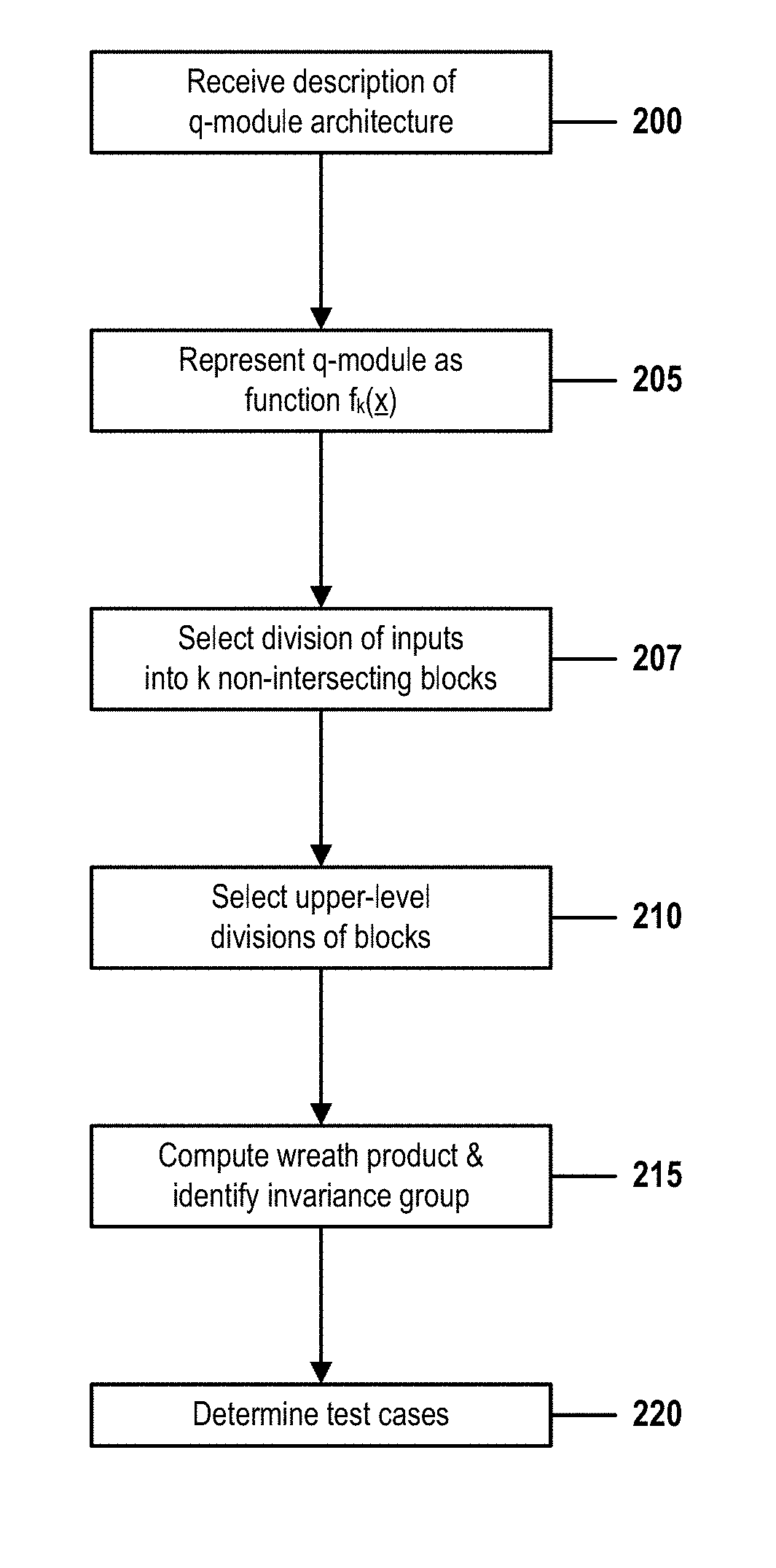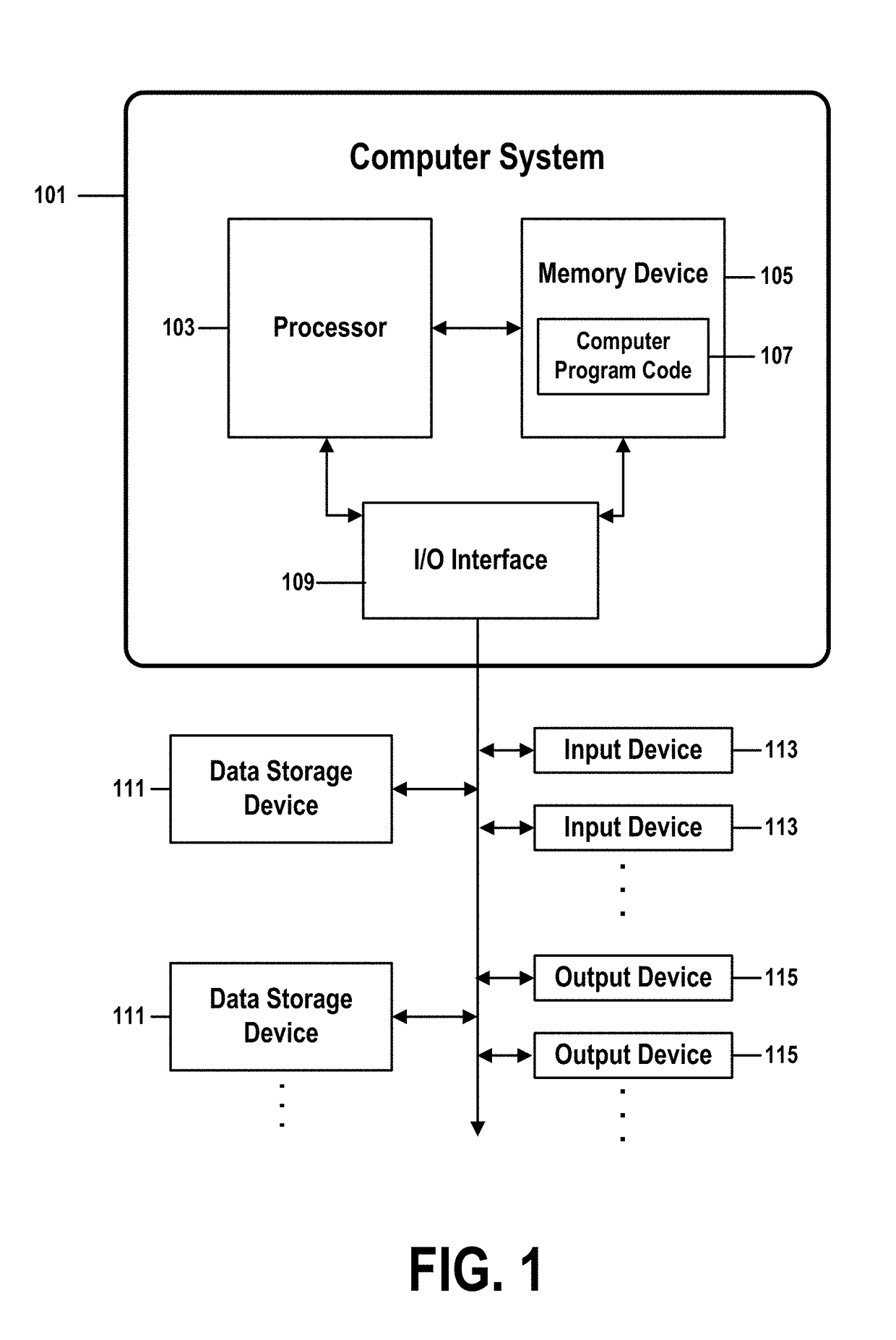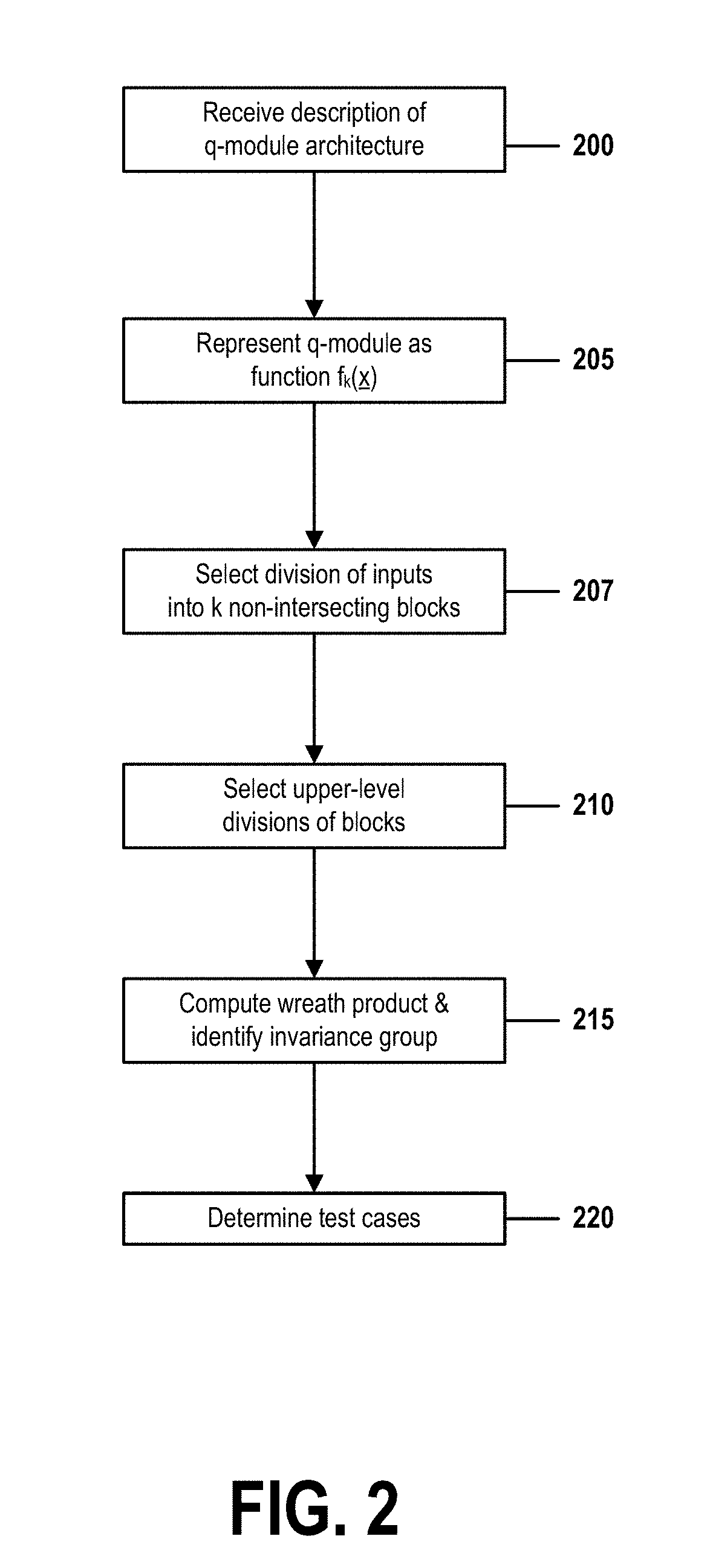Optimized testing of a partially symmetric quantum-logic circuit
a quantum logic and circuit technology, applied in the field of optimizing testing of a partially symmetric quantum, can solve the problems of prohibitively expensive or resource-intensive testing of a q-module comprising a larger number of inputs and states
- Summary
- Abstract
- Description
- Claims
- Application Information
AI Technical Summary
Benefits of technology
Problems solved by technology
Method used
Image
Examples
Embodiment Construction
[0035]Embodiments of the present invention optimize the operation of a test system or test application that verifies correct operation of a partially symmetric quantum-logic circuit.
[0036]Testing a quantum-logic circuit (or “q-module”) can be far more time-consuming and resource-intensive than testing conventional binary logic circuits because quantum logic is not limited to two states. Where verifying operation of a two-input binary AND circuit would require four tests, corresponding to four possible binary inputs {00, 01, 10, and 11}, a two-input q-module that supports four states A, B, C, and D, would require 16 tests to test 16 possible input states {AA, AB, AC, AD, BA, BB, BC, BD, CA, CB, CC, CD, DA, DB, DC, and DD}. Embodiments of the present invention solve this technical problem by enhancing the operation of a circuit-testing software application or a hardware circuit-testing device.
[0037]The number of necessary tests needed to verify a q-module increases as a geometric func...
PUM
 Login to View More
Login to View More Abstract
Description
Claims
Application Information
 Login to View More
Login to View More - R&D
- Intellectual Property
- Life Sciences
- Materials
- Tech Scout
- Unparalleled Data Quality
- Higher Quality Content
- 60% Fewer Hallucinations
Browse by: Latest US Patents, China's latest patents, Technical Efficacy Thesaurus, Application Domain, Technology Topic, Popular Technical Reports.
© 2025 PatSnap. All rights reserved.Legal|Privacy policy|Modern Slavery Act Transparency Statement|Sitemap|About US| Contact US: help@patsnap.com



